The next morning, I got up early to make some coffee, as is my usual routine, and told Vere to sleep in. It was a holiday in France, la Fête de la Victoire, le Jour de la Liberation (victory day, liberation day) celebrating the anniversary of the end of World War II and the French people’s freedom. It is the anniversary of when Charles de Gaulle announced the end of World War II in France, on May 8, 1945. It is a day off for the general population, with schools and most businesses closed. And the next day is Europe Day, which celebrates the peace and unity in Europe following the trauma of the war.
So I stood at the tall kitchen window, looking out over the surrounding roof tops and the tall Plane tree outside our window. It was then I noticed that a pigeon had built a nest in the top branch of the tree. She was fluffing her feathers back and forth and I realized she must be already sitting on eggs. She looked over at the window, saw me and blinked. Then turned her head away to watch over the street and the buildings. I wondered how many eggs she might be sitting on. I looked it up and found out that a hen will lay one to three eggs, but usually two. It takes eighteen to twenty days for them to hatch. Then the squabs take about four weeks to mature.
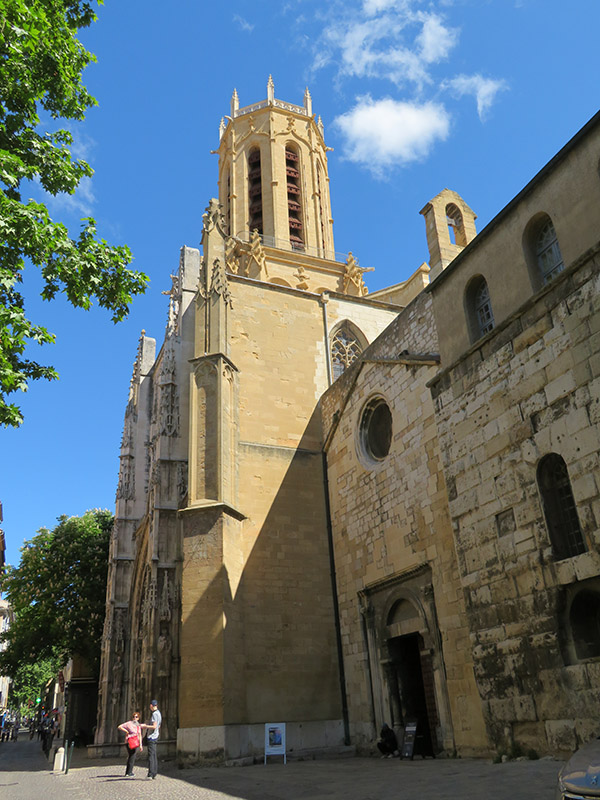 When Vere got up, we went to a local pâtisserie for breakfast goods. It was open on the holiday, as well as the boulangerie for bread. Patisseries are usually open every day in a tourist area, and both generally from 7:30 a.m. to 7:30 p.m. The French eat a lot of bread, and the law says they must be open even on a Sunday because of their need, but may close at 1:30. We got some pastries; one that was a combination of almond and chocolate, and an almond brioche, just to try something different. Then I suggested that we walk more of the town, down to the central boulevard, the Cours Mirabeau, to show him some of the town’s fountains. Aix is known as the city with a thousand fountains, once having a fountain in every square. Though now, that is probably closer to about a hundred, but not more.
When Vere got up, we went to a local pâtisserie for breakfast goods. It was open on the holiday, as well as the boulangerie for bread. Patisseries are usually open every day in a tourist area, and both generally from 7:30 a.m. to 7:30 p.m. The French eat a lot of bread, and the law says they must be open even on a Sunday because of their need, but may close at 1:30. We got some pastries; one that was a combination of almond and chocolate, and an almond brioche, just to try something different. Then I suggested that we walk more of the town, down to the central boulevard, the Cours Mirabeau, to show him some of the town’s fountains. Aix is known as the city with a thousand fountains, once having a fountain in every square. Though now, that is probably closer to about a hundred, but not more.
It turned out to be a lovely sunny day for a walk and being an exploring tourist. Our first visit, past the Town Hall Square and street food market, was to enter the Saint Sauveur Roman Catholic Cathedral. The cathedral has a mixture of Romanesque architecture with Gothic portal doorways and contains part of a Roman wall. The front wooden doors were lovely with carved garlands of flowers. The church was erected over the site of an ancient temple dedicated to Apollo. The historian Jean Scholastique Pitton (1654) claimed that the temple was dedicated to a solar deity, relying on the discovery of a portion of a statue’s thigh of the saint, to substantiate his claims.
The octagonal baptistery, blessed in 1579 by Canon Jean de Léone, has a dome decorated with plasterwork surrounded by reused Roman columns. The baptismal font is from the Merovingian period (476–750 C.E.) Under the slabs of the baptistery are the vaults of canons and archbishops. Since its construction, the baptistery has been fed by hot water from the Roman baths and Baptism is administered by total immersion. There were some pretty amazing stained glass windows in the church, as well. What made this cathedral at its high altar different, were the modernized highly polished candlestick holders and very modern type Bishop’s seat. Extremely long white drapes hung above the high altar and divided to each side of the staging like wings, which made it look not only modern but ethereal.
Here’s an interesting anecdote having to do with this church, which I found online. “In 1318, Archbishop Robert de Mauvoisin was forced to resign from office, accused of ‘publicly supporting concubines; selling sacraments; tampering with the interdicts which he issued against the churches on slight motives, and despising the censures which he had incurred for having struck the archdeacon of his chapter and some canons. He was also accused of having crossed the city of Aix on Holy Thursday to the sound of instruments and preceded by dancers; to love hunting passionately; to lead his procession with hunters, dogs, and birds, to the great prejudice of the inhabitants whose countryside he devastated; to give the sacrament of confirmation after dinner or in the evening in the light outside the church, when he returned from the pursuit of wild beasts. Finally, he was accused of having trampled on the people in his pastoral visits and spewed blasphemies against God, the Virgin, and the saints. The pope appointed commissioners to examine these grievances. The prelate diminished the horror of some accusations by the interpretations he gave, and denied others. But overwhelmed by the depositions of witnesses, he prevented his condemnation by voluntarily abdicating within the month, in 1318.’”
Afterward, we walked down to the famous boulevard, the wide Cours Mirabeau, which has many fountains along its length. Unlike when I was here forty-odd years ago, the street is now a pedestrian only walkway. The boulevard was named after His Honor Gabriel Riquetti de Mirabeau. Louis XVIII described it as, “a place for walks, pleasure and sumptuous parties.” It is lined with Plane trees and ancient facades on the upper parts of the buildings. At one end of the boulevard is the Fontaine de la Rotonde (Fountain of the Rotunda), built in 1860. This fantastic fountain fed by the local Canal de Provence, is about 105 feet wide and a little over 39 feet high. Around its base are bronze sculptures of angels on the backs of dolphins, sirens, swans and twelve lions. There are three female figures at the top representing agriculture, justice, and fine arts.
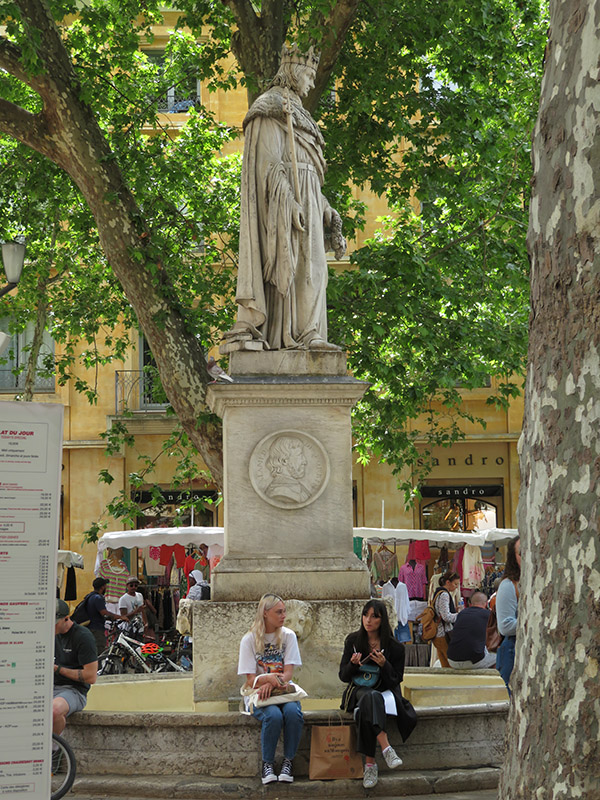 At the other end of the boulevard is a statue of King Rene standing proudly in his royal robes looking down the Mirabeau. Down the center line of the avenue between the king and the rotund fountain are many square fountains with hanging plants, covered with moss. The streets are lined with shops and cafes and rushing electric unicyclists with big square insulated boxes delivering pizzas.
At the other end of the boulevard is a statue of King Rene standing proudly in his royal robes looking down the Mirabeau. Down the center line of the avenue between the king and the rotund fountain are many square fountains with hanging plants, covered with moss. The streets are lined with shops and cafes and rushing electric unicyclists with big square insulated boxes delivering pizzas.
We are not church goers, but old churches do hold unique historical stories and artistic showpieces. After lunch we walked to the church of Saint John of Malta, which is located on the cross streets of rue Cardinale and rue d’Italie. We arrived when a mass was on, so we sat outside for five minutes until it was over, then quickly went in before they closed for the day. It houses the mausoleum of the Counts of the Provence family. Now, the Apostolic Monks of Aix are in charge here.
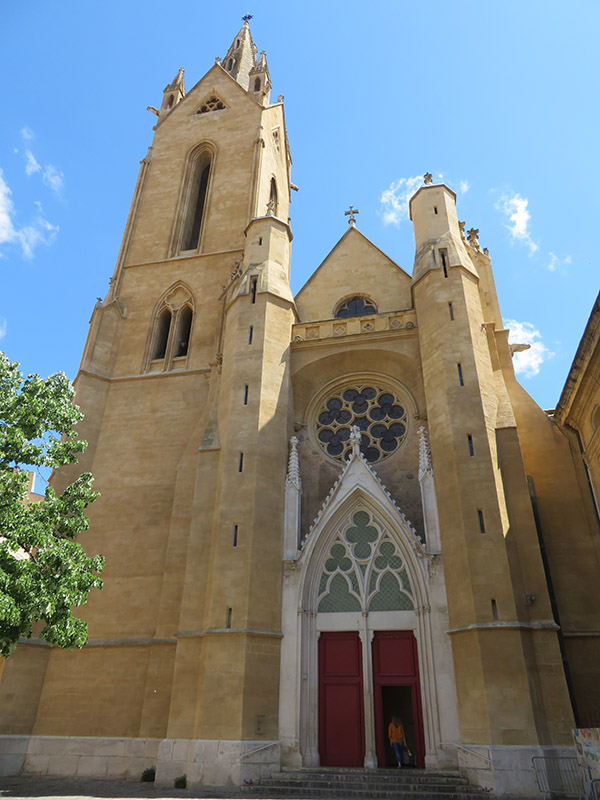 This was the first Gothic Provençal church in the area, built between 1270 and 1280 by the Hospitallers of Saint-Jean-de-Jerusalem, and functioned as a chapel for the knights and a hospice. After the French Revolution everything inside was plundered, so it became for a time, a military storehouse. The building was finally converted back into a church and reopened in 1858. During reconstruction, polychrome stained glass windows depicting the saint were discovered. Also a large rose-glass window appeared. In other newer windows, three knights Hospitallers of Malta are shown: Gerard Thom, Berenger Monachi and Hélion de Vileneuve. Many fine paintings are now on the walls. There is the Resurrection of Christ by Louis Finson, who was a follower of Caravaggio; two paintings by Gilles Garcin, sculpture by Christophe Veyrier, and The Crucifixion by Eugene Delacroix.
This was the first Gothic Provençal church in the area, built between 1270 and 1280 by the Hospitallers of Saint-Jean-de-Jerusalem, and functioned as a chapel for the knights and a hospice. After the French Revolution everything inside was plundered, so it became for a time, a military storehouse. The building was finally converted back into a church and reopened in 1858. During reconstruction, polychrome stained glass windows depicting the saint were discovered. Also a large rose-glass window appeared. In other newer windows, three knights Hospitallers of Malta are shown: Gerard Thom, Berenger Monachi and Hélion de Vileneuve. Many fine paintings are now on the walls. There is the Resurrection of Christ by Louis Finson, who was a follower of Caravaggio; two paintings by Gilles Garcin, sculpture by Christophe Veyrier, and The Crucifixion by Eugene Delacroix.
By then we were hungry for lunch and began walking back toward our apartment. We saw this one restaurant that looked good, La Mado, which had a glass display at the entry with fresh items to tempt the walker by. There was a huge outdoor seating area, but inside it was cooler and empty of other diners, so we had it to ourselves. It had a high-fashion interior and a large menu to choose from.
Having seen the fresh oursin (uni-sea urchin) in the outside case, I was interested. If you have ever had this delicacy, then you know its unique flavor. On offer was the black urchin with its spiny shell cut in half and served on ice. The insides of this Echinoldea are the gonads of both male and female urchins, also called roe or corals. The shells are served cut in half with the shell open upward. One collects it with a spoon and slathers it on bread, adding a squeeze of lemon. Mine were so fresh, they still had the slight scent of the sea, but were not salty as some suppose. In fact, I added a shake of salt on top of the lemon. I also off-set their sea flavor with a contrasting side of goat cheese and honey toasts. Vere had toast with foie gras de canard, topped with a sweet raisin relish as an appetizer, and two small shish-kabobs of chicken for his main course. We took our time and enjoyed every bite.
Afterward, we walked further and found another open street market with sellers of things: books, paintings, items of silver, old cameras, jewelry, and odds and ends. There was also a large two-handled carder for carding wool, which put a visual to the real antique tool, adding to our knowledge of what the tool looked like, especially after eating dinner previously in the carder’s plaza. Then we headed back to the apartment to relax, write, and do a little remote work.
Later, Vere wanted some dinner and said a crepe would do. I was still satisfied from my lunch, but said I would go out with him. Maybe I would have a crepe, too. But by the time we arrived at a creperie, he decided he wanted something more substantial. So we wandered to the next square to the Brasserie d’Marie (a townhall brewery). I was surprised to see a beer seller, thinking that wine would be by far the more preferred drink of the French, but apparently beer consumption in the last few years has risen to almost the same as wine.
By the time we found him a place to eat, I was now gaining a small appetite. A nearby plaza was full of tables belonging to several restaurants. We found one and Vere ended up ordering roasted chicken with salad and fries, and I had a side of panko shrimp with a sweet dipping sauce.
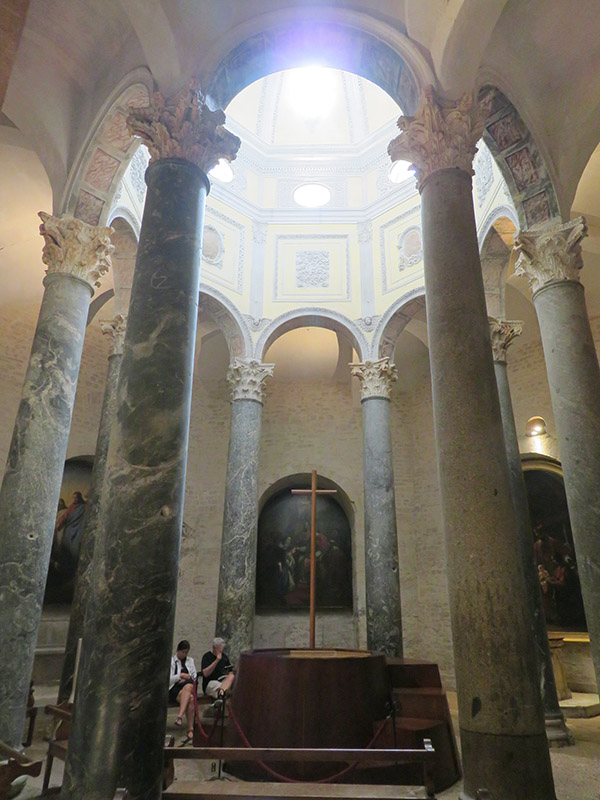

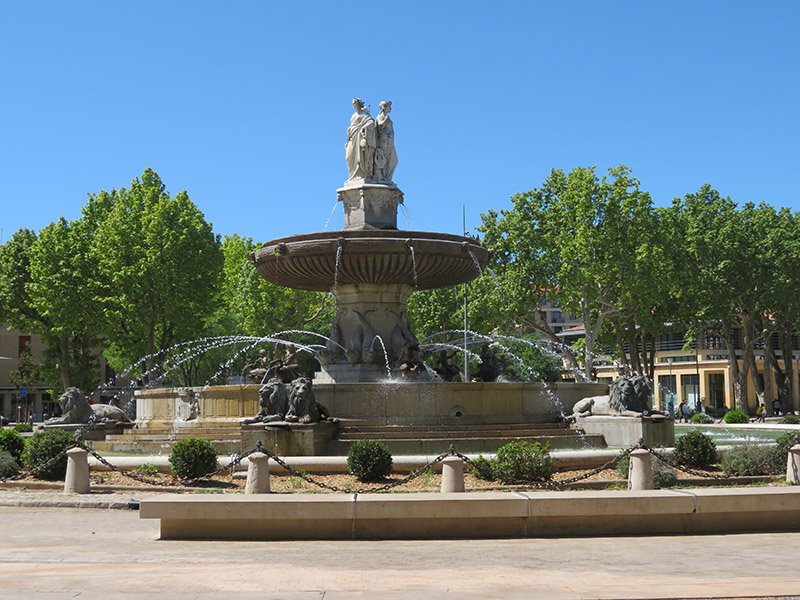
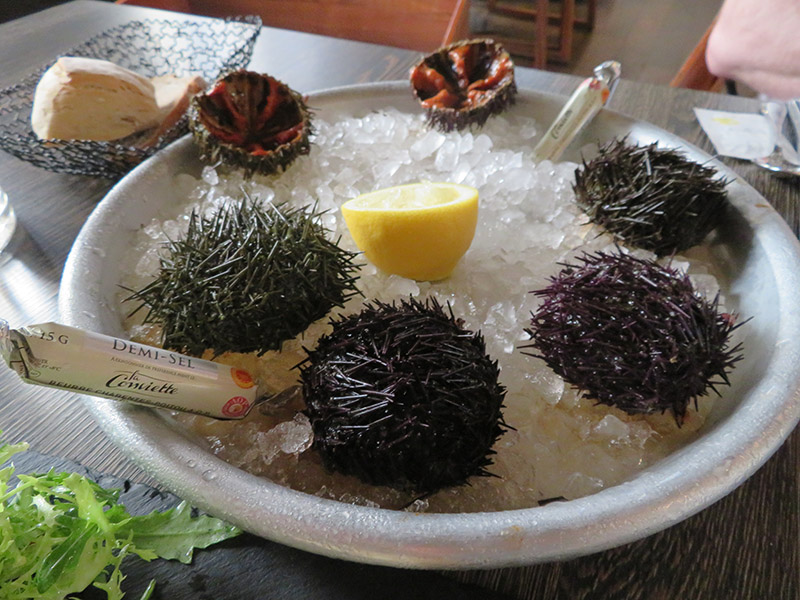
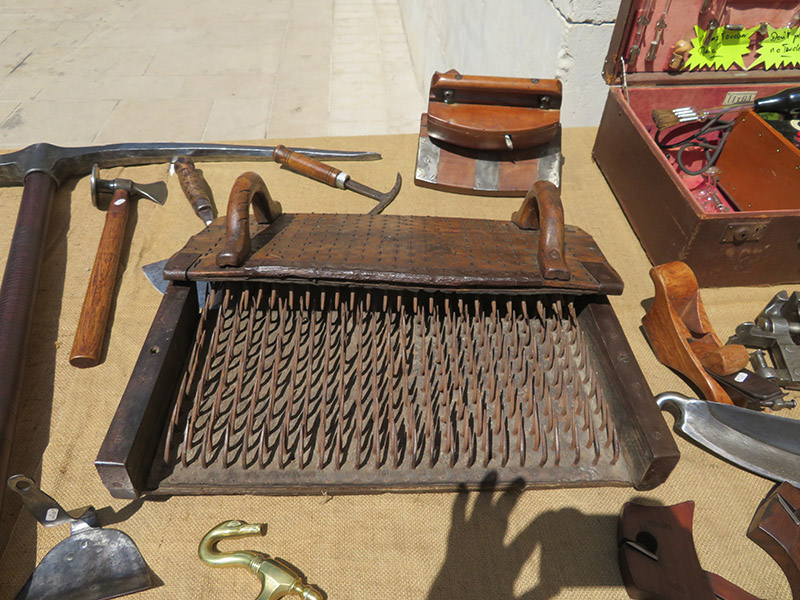
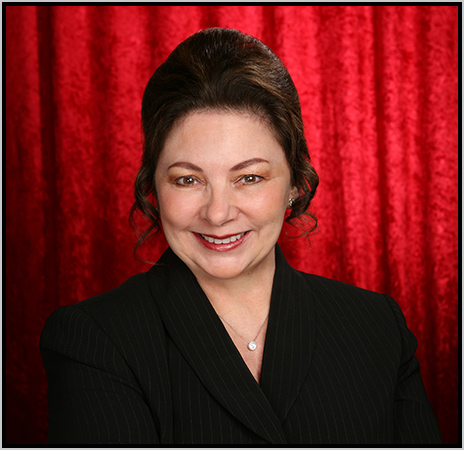 The official website of Lita-Luise Chappell, writer on sex, magic, food, distant lands, and everyday life with articles, poetry, novels, travelogues, rituals, cookbooks, and short-stories.
The official website of Lita-Luise Chappell, writer on sex, magic, food, distant lands, and everyday life with articles, poetry, novels, travelogues, rituals, cookbooks, and short-stories.













 Sticks and Balls:
Sticks and Balls:


 Lita is now on Bluesky too!
Lita is now on Bluesky too!

